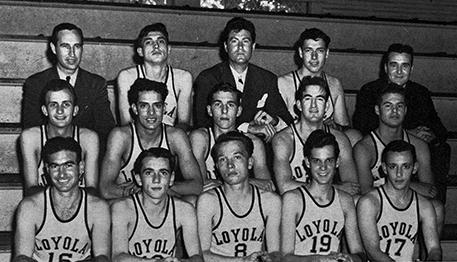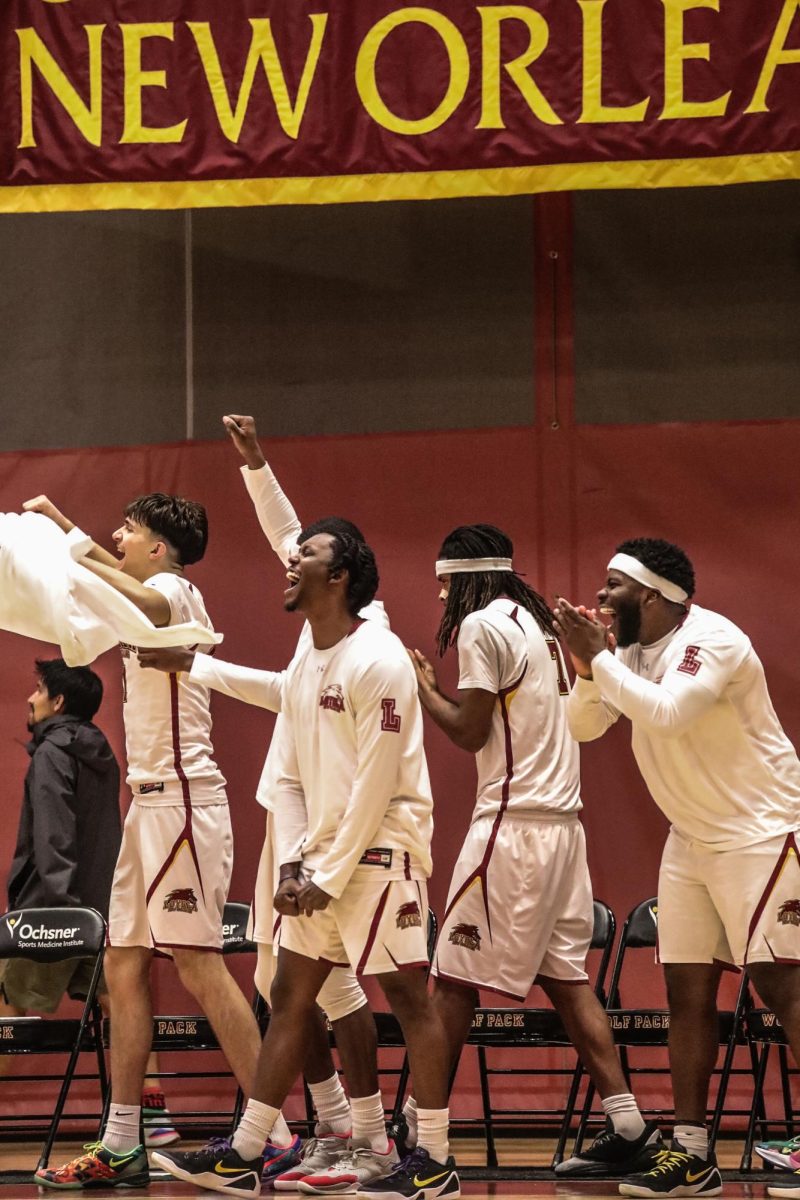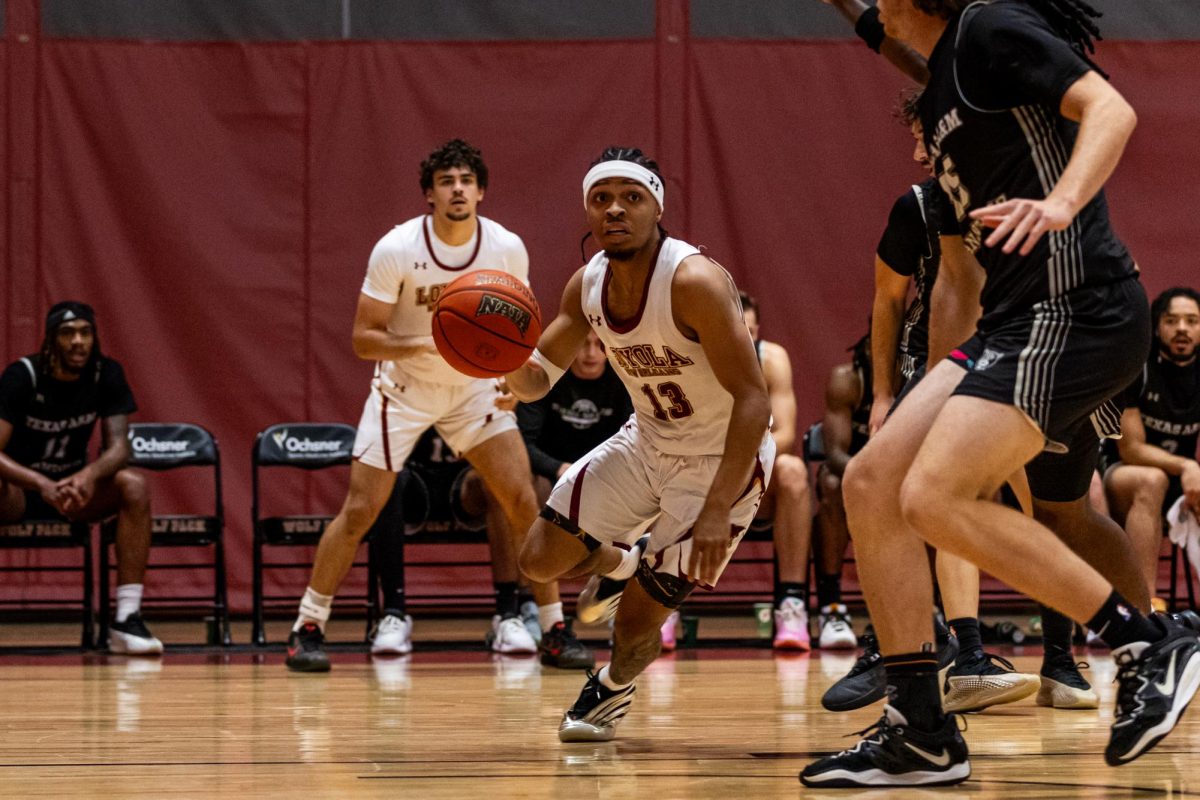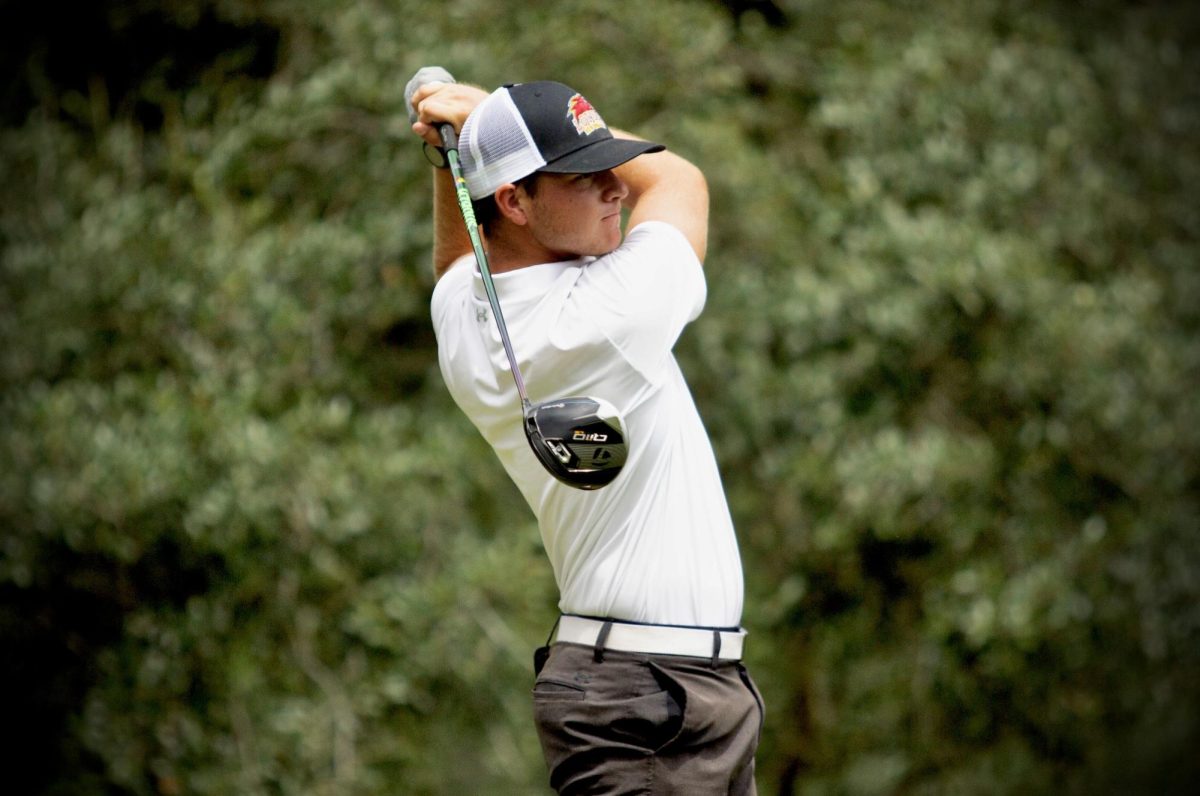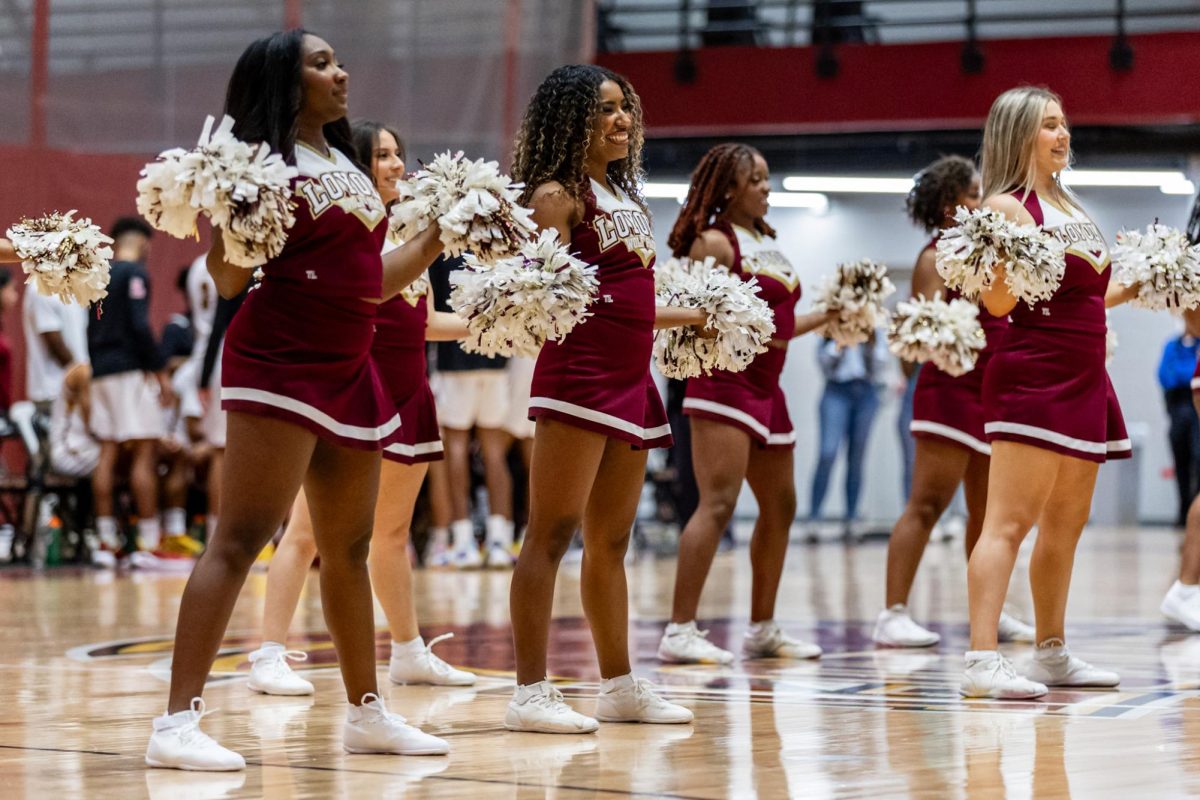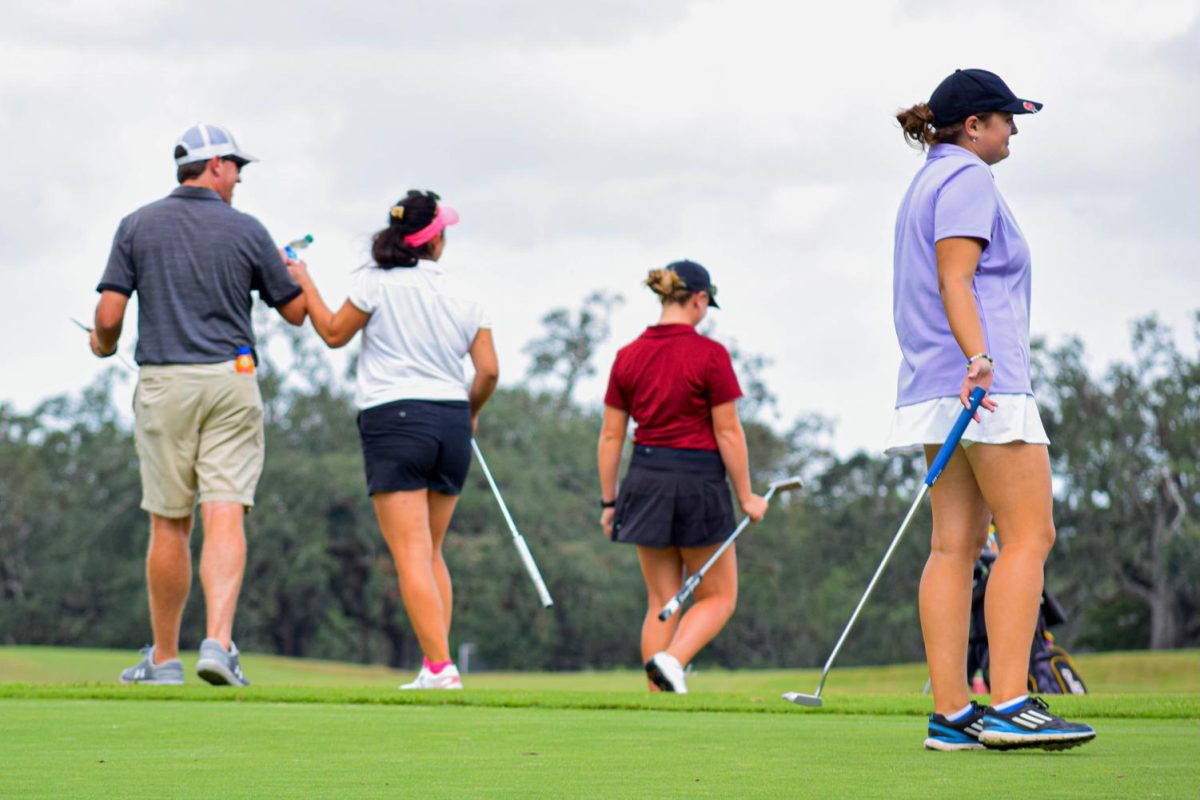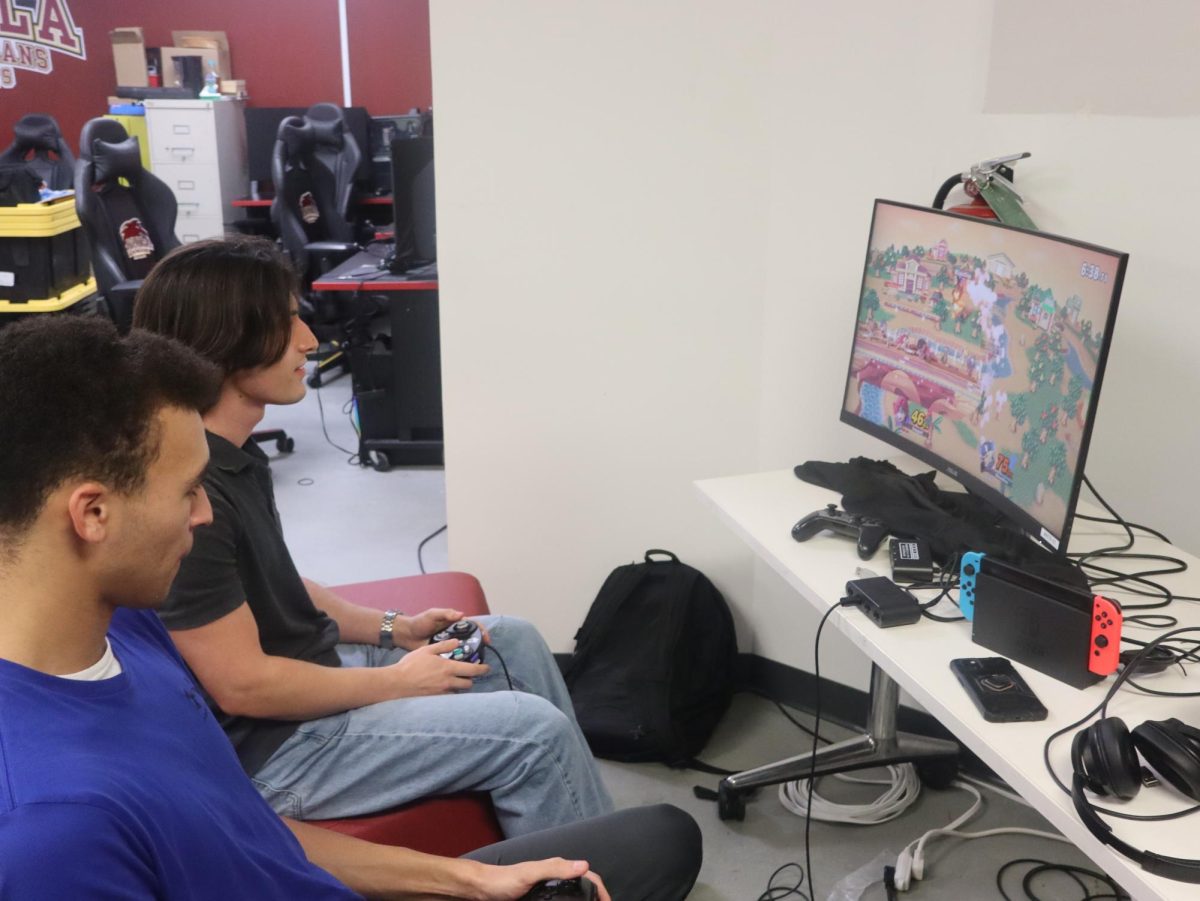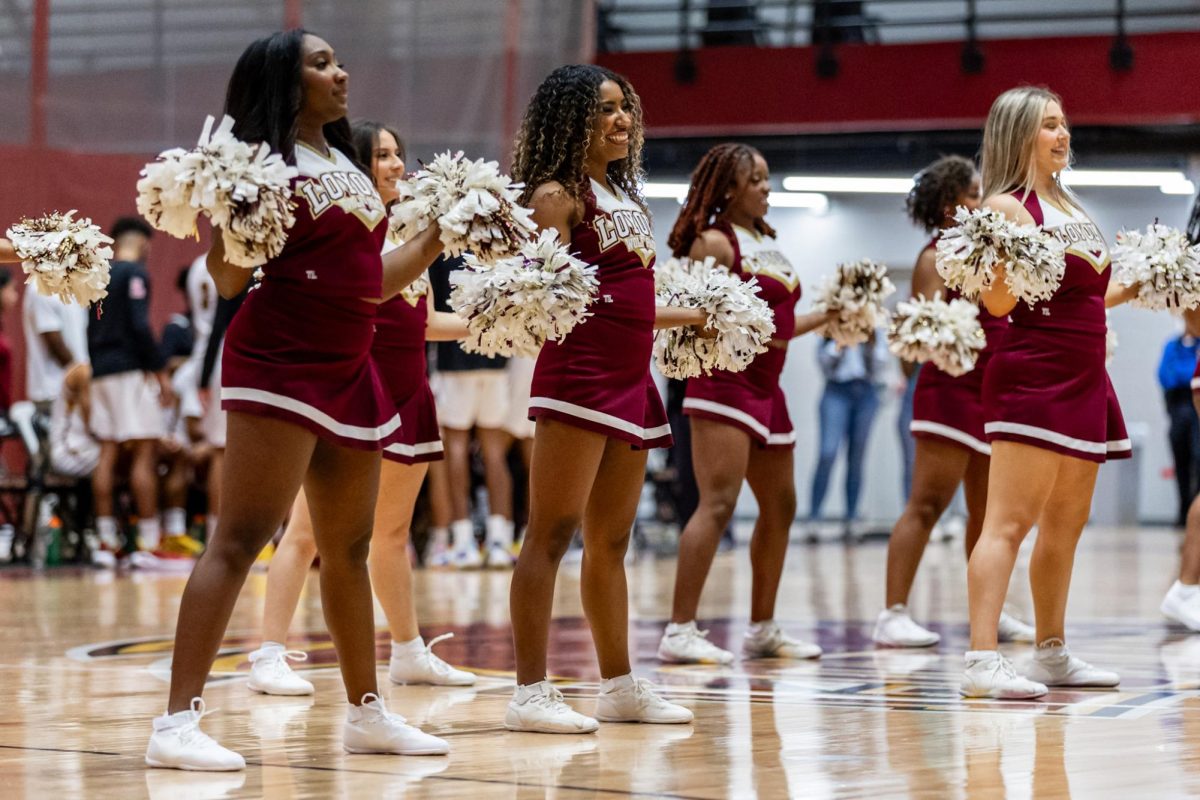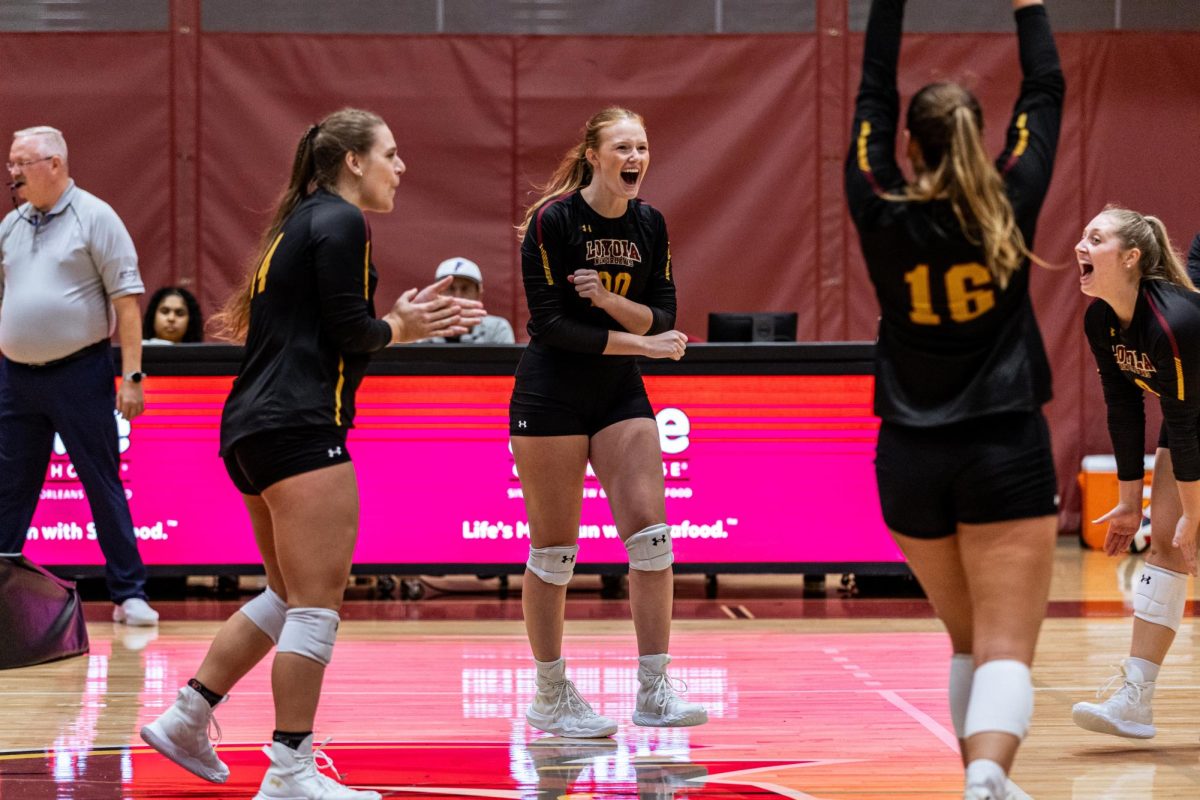At the height of World War II, Loyola won a basketball championship, making them the very first team to bring a national basketball championship to the city of New Orleans by winning the 1945 Intercollegiate Basketball Title.
Winning a national athletic contest would, in many cases, be impressive on its own. However, when factoring in the trials of a nation in war, the circumstances are especially unique.
Ramon Vargas, A’09, former editor-in-chief of The Maroon, brings light to the school’s victory in his new book “Fight, Grin, and Squarely Play the Game.”
A group of young men, some fresh from war, returned to this small Jesuit school in the south to fight for a different type of victory. Decades later, while working in The Maroon office, Vargas stumbled across the story by accident.
“I had some free time one day, and I asked myself what it was like to be at college during World War II,” Vargas said.
The Maroon keeps copies of the newspaper dating back to the 1920s. Vargas took advantage of this and went on his own quest for a detailed history of Loyola life during WWII.
“I pulled out the archives of the old Maroons,” Vargas said. “I saw a headline about Loyola winning a national championship.”
Vargas was surprised to learn that many Loyola students and New Orleans residents were unaware of this piece of history.
“I had never heard of it,” Vargas said. “I asked my father, and he had never heard of it either. Everyone I asked had never heard of it. So my inkling was that most of the city hadn’t.”
As a college student, Vargas promised himself that he would one day tell the story of the national championship team.
“It was this forgotten piece of history that needed to be told to the city,” Vargas said.
In his book, Vargas details the lives of these players during the season and after graduation.
“It was such a unique accomplishment,” Vargas said. “What I really enjoyed was being able to see that it was the peak of many of their basketball careers. And seeing what they did after they graduated.”
The members of the 1945 team went on to achieve a variety of things in the city.
“Two [members] founded schools,” Vargas said. “One ended up playing a few seasons in the NBA. Being able to trace the direction of their lives afterwards is great.”
James Eldon was a freshman on the basketball team when Loyola went on to grab the national championship.
“I played in high school,” Eldon said. “Then I came to play at Loyola.”
Eldon, a New Orleans native, recalls his experience as a young man in America during the war, but was fortunately able to stay in the country.
“I was exempt from the war because I was in dental school,” Eldon said.
So while some friends and classmates were shipped off to war, Eldon was able to stay on the home front and fight for a different type of victory. Eldon remembers watching his friends leave for war, but was not fazed by it.
“It was just a part of life,” Eldon said.
Vargas recalls moments of driving around the city and realizing that the building or school he was looking at was actually founded by one of the championship players.
“The legacy of these players is all around the city,” Vargas said. “Reminders of them are really all around us.”
Though the whole scenario may seem like a fairytale ending, some aspects of the event serve as reminders of the U.S.’s long battle with racism.
“One of the biggest players, it was discovered that he had a black ancestor,” Vargas said. “He ended up having to transfer schools.”
While integration and racial tolerance are strong today, Vargas reminds readers that they have come a long way.
“Back then, white people and black people couldn’t compete together,” Vargas said. “They couldn’t compete with or against each other or eat in the same restaraunt.”
Vargas said he found it especially important to remind Loyola students how much progress we have made, and he stresses the importance of knowing our own history. The 1945 team was one of the best in all of basketball’s history.
“You could knock it out in two and a half, three hours,” Vargas said. “You can learn so much. It’s a quick read.”
Whether it’s race relations or the war itself, playing college basketball during WWII undoubtedly had unique factors that no other generation has experienced.
“This was one of the greatest groups assembled in the history of Loyola,” said Vargas. “And World War II was just all around.”
Cami Thomas can be reached at cathoma2@loyno.edu


